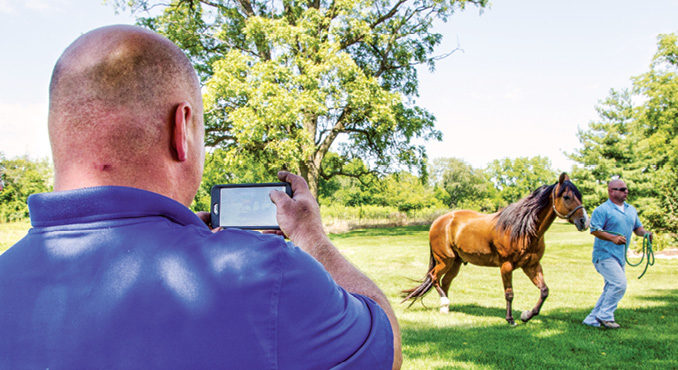American Farriers Journal
American Farriers Journal is the “hands-on” magazine for professional farriers, equine veterinarians and horse care product and service buyers.

A: On routine visits where I have a prior history with the horse, the first thing I ask the client is how has the horse been traveling/going? Has there been anything different? Is there something that should be discussed that would require jogging the horse? If everything is normal, then I do not jog the horse.
If the owner reports something new and wishes to jog the horse for observation, I will evaluate the horse’s anatomy in relationship to its job description and athleticism. Here are my criteria:
Ideally, the footing is about 3 inches deep to accurately observe and judge the horse’s locomotion. If there is a hard surface, the landing phase and loading breakover will not be true. If the footing is too deep, there will be a delay of breakover that requires more inertia and the hooves will not be observed on landing, loading or breakover. The flight of the foot will be handicapped as well as your assessment. Having the horse go in circles is the most important as it gives you the opportunity to observe how the horse carries itself, balances and the rider’s ability.
When observing the horse I always watch it travel to the left and then the right, checking diagonals. The first view I like is from the side because you can check the vertical…